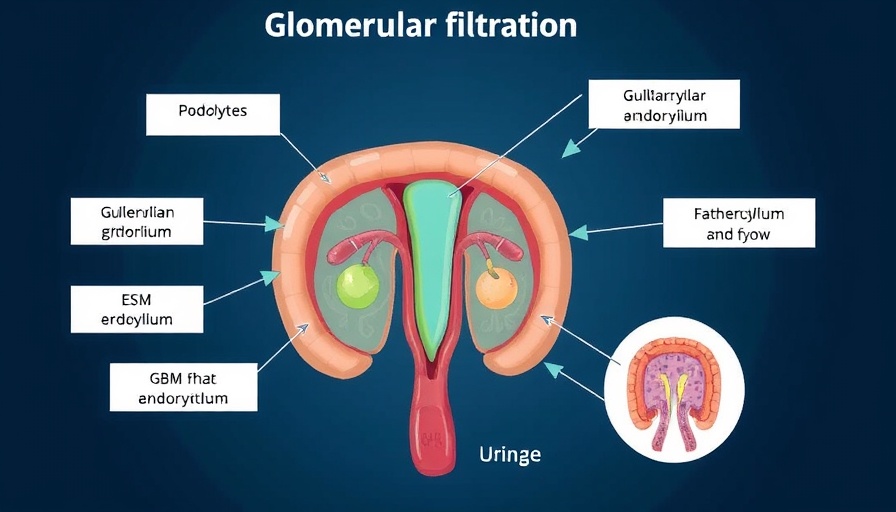
Understanding the Significance of Proteinuria in Glomerular Diseases
Proteinuria, the presence of excess protein in urine, is a hallmark indicator of kidney dysfunction, particularly in primary glomerular diseases. These conditions can lead to severe complications if left untreated, and exploring effective treatment options is critical for patient outcomes. Recent studies have highlighted a renewed interest in hydroxychloroquine (HCQ) as a promising therapeutic agent
Exploring Hydroxychloroquine: A Game Changer?
Hydroxychloroquine, commonly known for its use in treating malaria and autoimmune diseases, may have new applications in nephrology, notably in reducing proteinuria. A recent study indicates that HCQ significantly lowers protein levels in patients with primary glomerular diseases. This finding could mark a crucial turning point in clinical practice, offering new hope for patients who have limited treatment options.
A Closer Look at the Research
The recent study focusing on HCQ involved a comprehensive analysis of patient responses to the treatment. Conducted on a diverse cohort, the trial measured various outcomes associated with proteinuria and overall kidney function. Initial results suggest a statistically significant reduction in protein levels among those treated with hydroxychloroquine versus those on standard treatments. The implications of these findings are vast, potentially reshaping treatment protocols and improving patient quality of life.
Potential Mechanisms Behind HCQ’s Effectiveness
While the exact mechanism by which hydroxychloroquine reduces proteinuria is still under investigation, experts theorize that its anti-inflammatory and immunomodulatory properties play a vital role. By targeting inflammatory pathways that contribute to glomerular damage, HCQ may provide a dual benefit of managing both inflammation and proteinuria.
Patient Perspective: Understanding the Importance of Treatment
For patients experiencing kidney issues, understanding why and how new treatments like hydroxychloroquine work can be empowering. This awareness fosters trust in their treatment plans and an active partnership with healthcare providers. The prospect of a drug traditionally used for other conditions finding a place in kidney disease therapy can enhance hope and compliance.
The Future of HCQ in Nephrology
As research continues to evolve, the potential for hydroxychloroquine in nephrology remains an exciting frontier. Upcoming clinical trials are expected to further elucidate its efficacy and safety profile specifically concerning diverse populations affected by glomerular diseases. This could open doors not only for HCQ but also for other anti-inflammatory drugs in the treatment of kidney diseases.
Community Conversations: Bridging Information Gaps
For patients and caregivers, accessing reliable information about drug effectiveness and side effects can be challenging. Engaging with healthcare professionals to discuss the implications of studies like the one on HCQ is crucial. Patients should advocate for themselves by asking informed questions and seeking clarity on treatment plans based on the latest research.
How This Knowledge Shapes Future Decisions
As we approach a new era in nephrology, the awareness of therapies like hydroxychloroquine pushes both patients and doctors toward informed decision-making. Being knowledgeable about treatment advancements can encourage proactive health management tailored to individual needs.
In conclusion, the findings on hydroxychloroquine's role in reducing proteinuria in primary glomerular diseases not only spotlight an innovative treatment avenue but also represent a shift in how we understand kidney disease management. By staying informed, patients can better navigate their health journeys and empower their healthcare teams to innovate.
 Add Row
Add Row  Add
Add 




Write A Comment